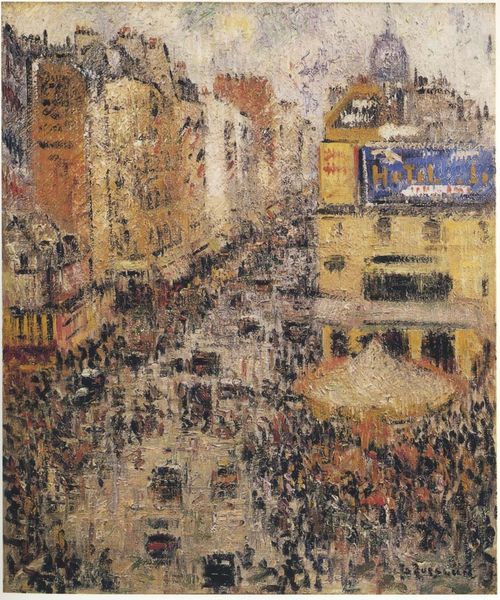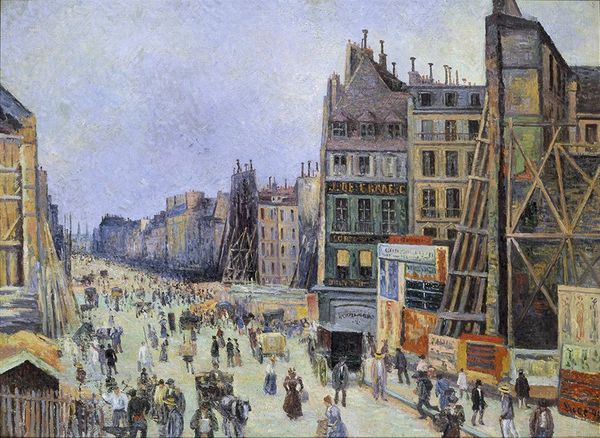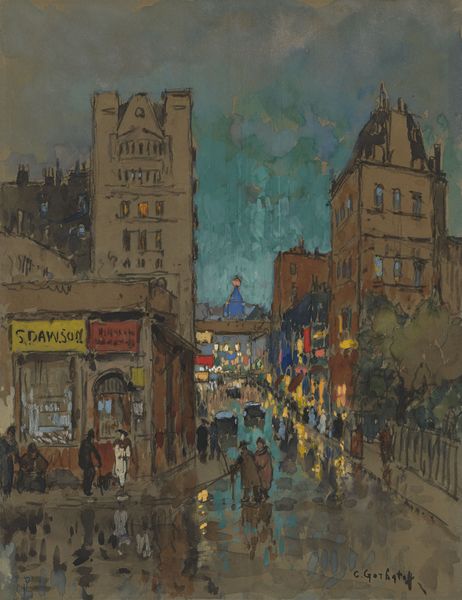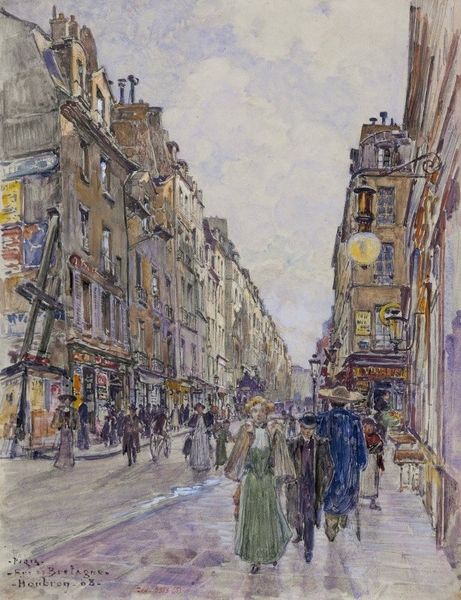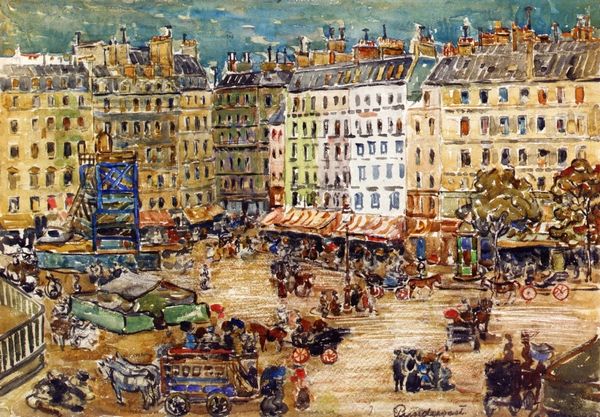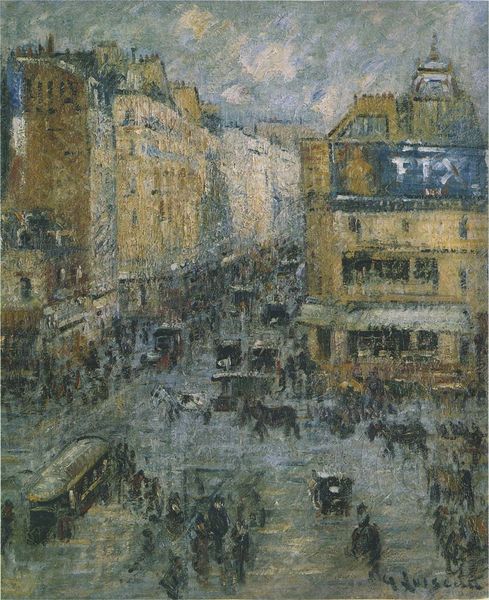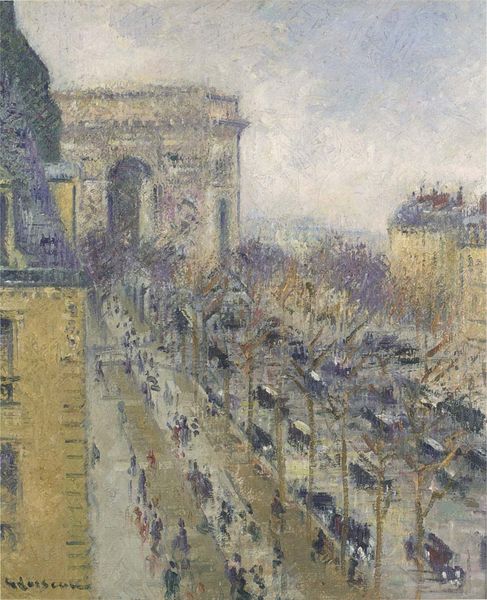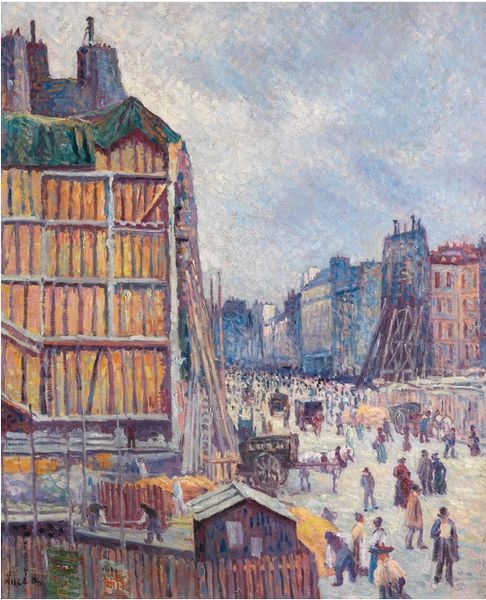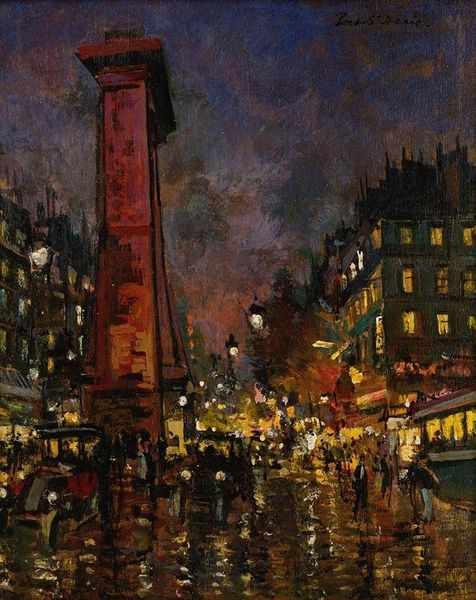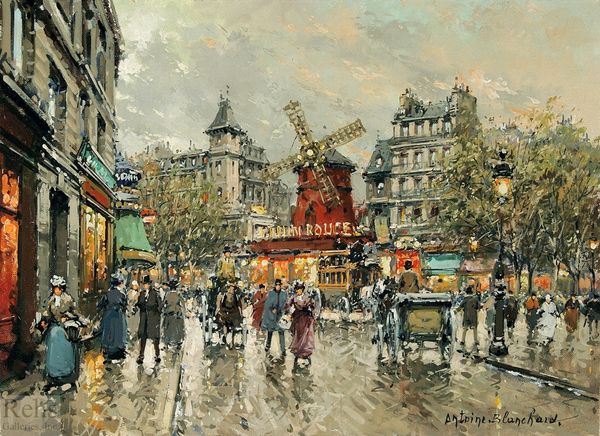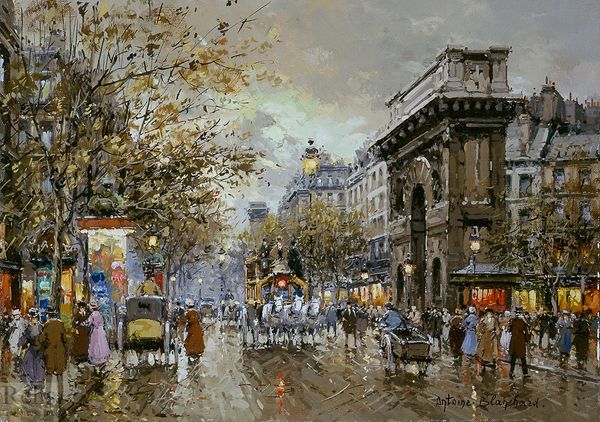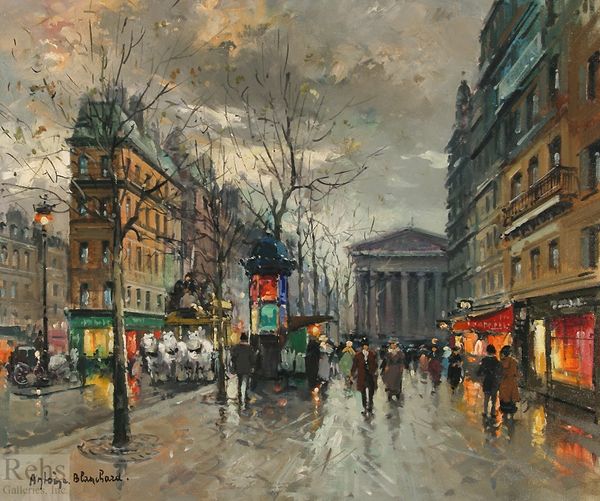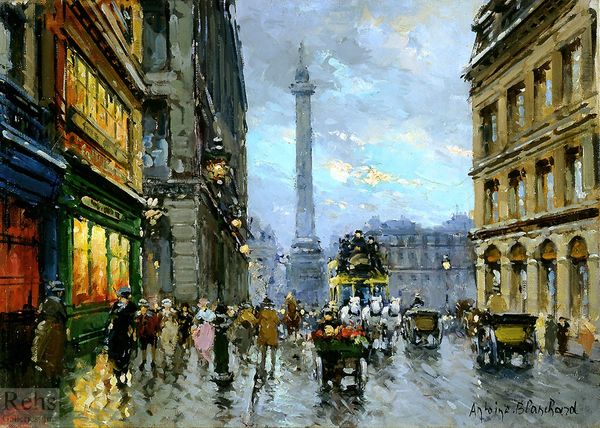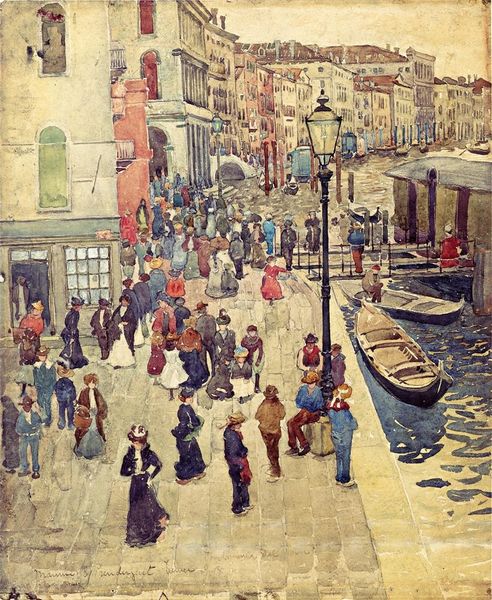
Dimensions: 60.5 x 73.5 cm
Copyright: Public domain
Curator: Here we have Gustave Loiseau's "Cligancourt Street," painted in 1920. Look at the bustling city scene, rendered in the impressionistic style he so favored. Editor: The surface itself feels dynamic! You can see the thick, gestural strokes. There’s almost a nervous energy emanating from the application of oil paint. Curator: Precisely. Loiseau’s post-impressionistic treatment captures a moment. The lack of blending, the almost frenetic dabs of colour, give it an ephemeral quality, reflective of a specific light, a specific time. Semiotically, the painting operates within a familiar code: fleeting urban existence. Editor: What strikes me is the contrast between that 'fleeting urban existence', as you so nicely put it, and the solid structures. It’s all paint of course, pigment from the earth, worked by human hands, to depict these towering buildings, and a consumerist advert. Think about the layers of labor involved. The factory workers making the paint, the advertising industry, the transport... Curator: The "Fix" advertisement high above is of compositional significance. Its rectangular boldness interrupts the flow, almost creating a focal point despite being off-center, creating a kind of tension within the artwork. Editor: And isn't the creation and dissemination of these posters tied to shifts in material culture? Cheaper production enabling a deluge of signs…It really brings the labor behind consumer society into sharp focus. The paint is documenting the shift to a society where images had a new ubiquitous materiality. Curator: Ultimately, though, the genius here lies in the application of Impressionistic techniques to capture modern urban life. The short strokes evoke not just the scene but a sensation. Editor: Agreed. Though for me, it serves as a record, in paint, of a system relying on factories, the workers that toiled within them and then, later, as a piece consumed within a world of commercialism. It's interesting that he has materialised them in a new, modern materiality, oil paints that came out of factory production and industrial chemistry. Curator: Indeed. It brings forth an interesting take on the interplay of form and material reality. Editor: Precisely! We’re both drawn into something new!
Comments
No comments
Be the first to comment and join the conversation on the ultimate creative platform.
